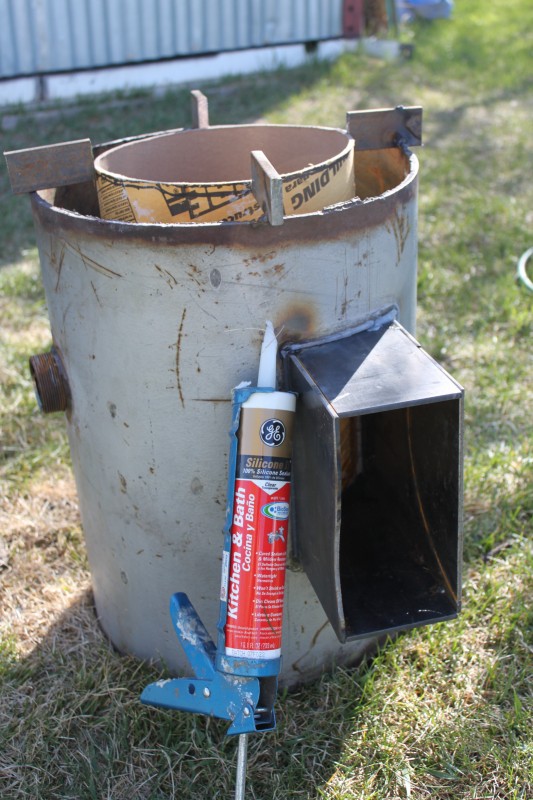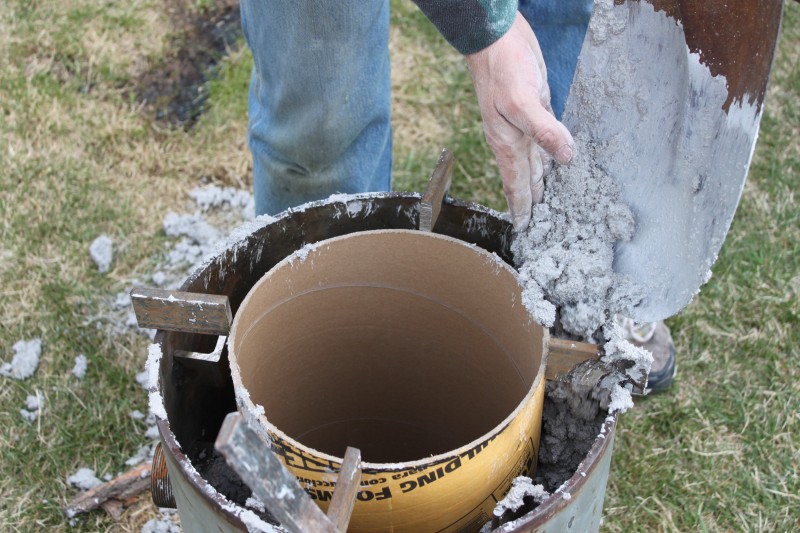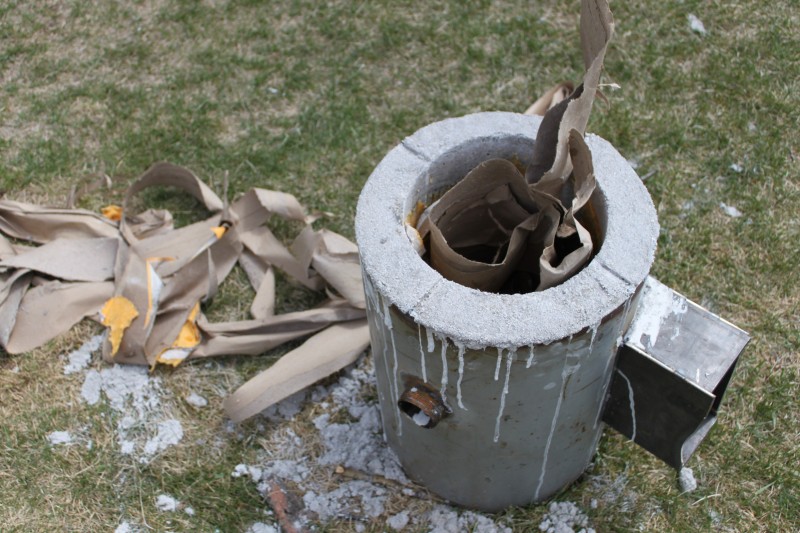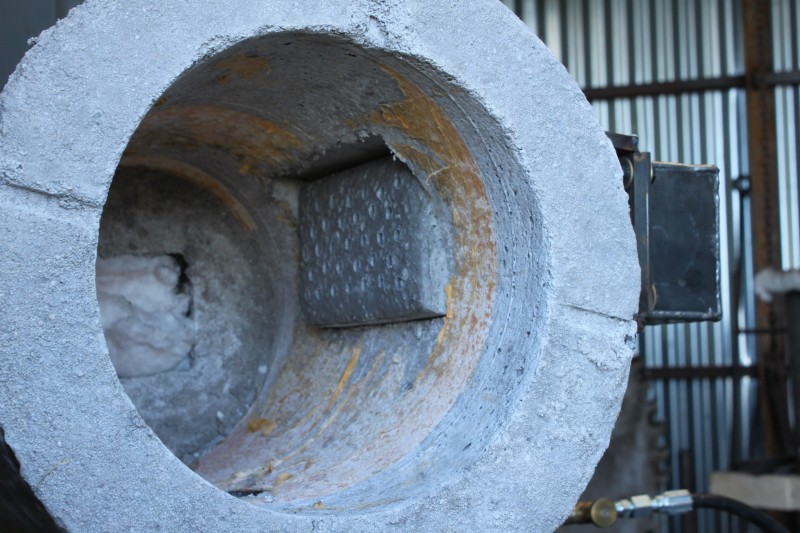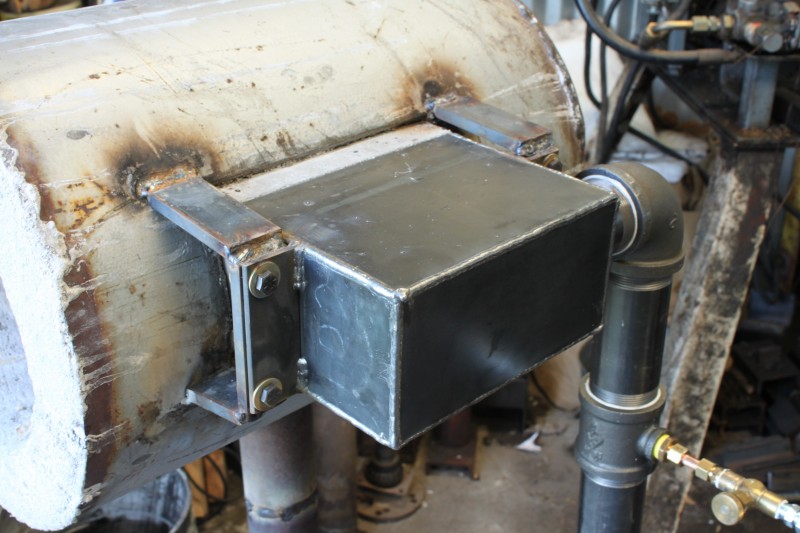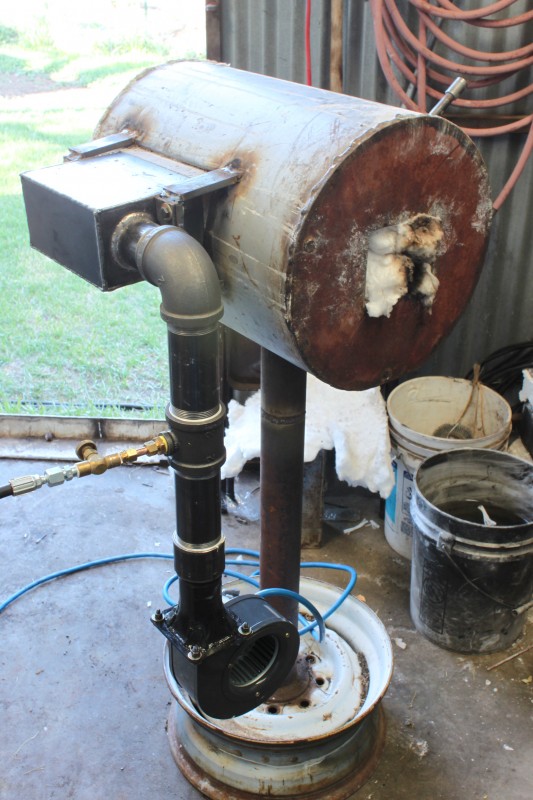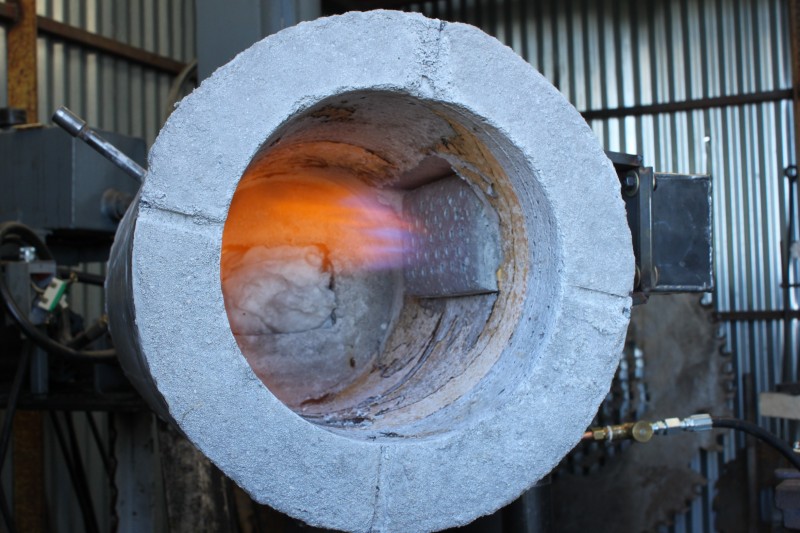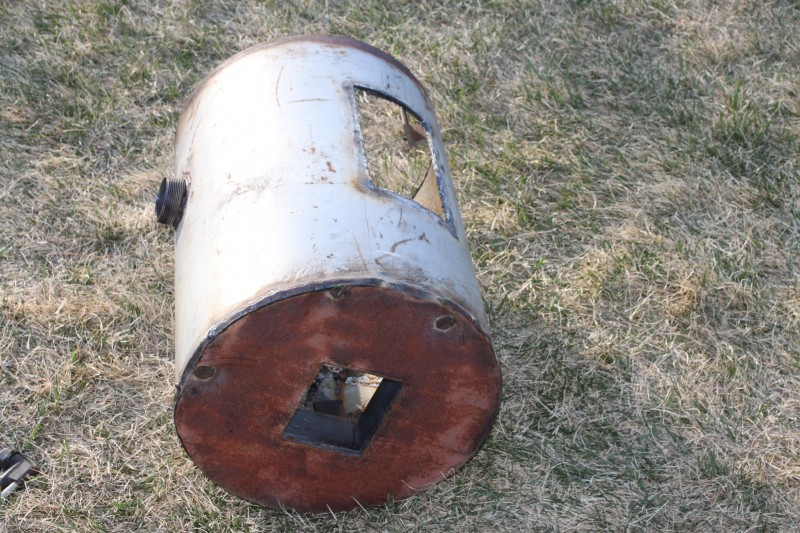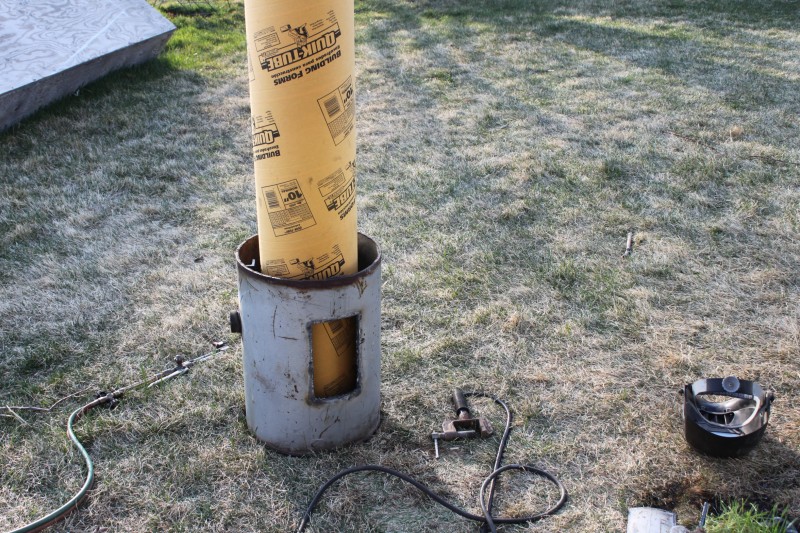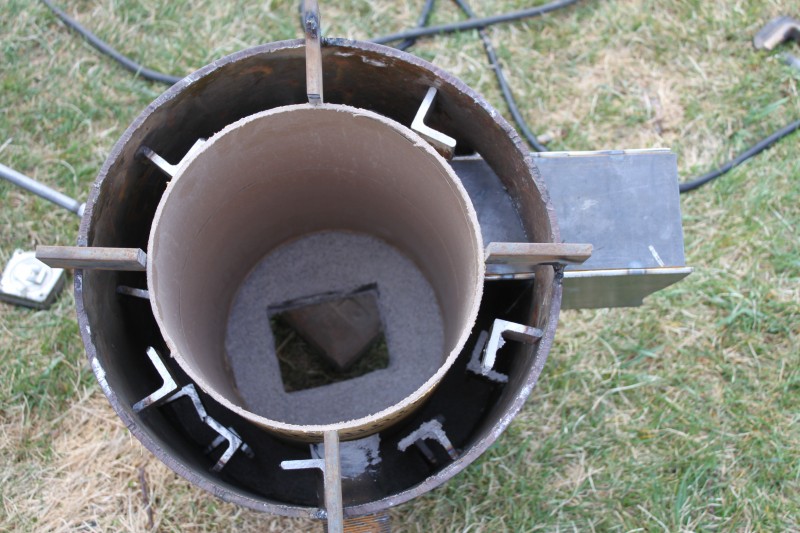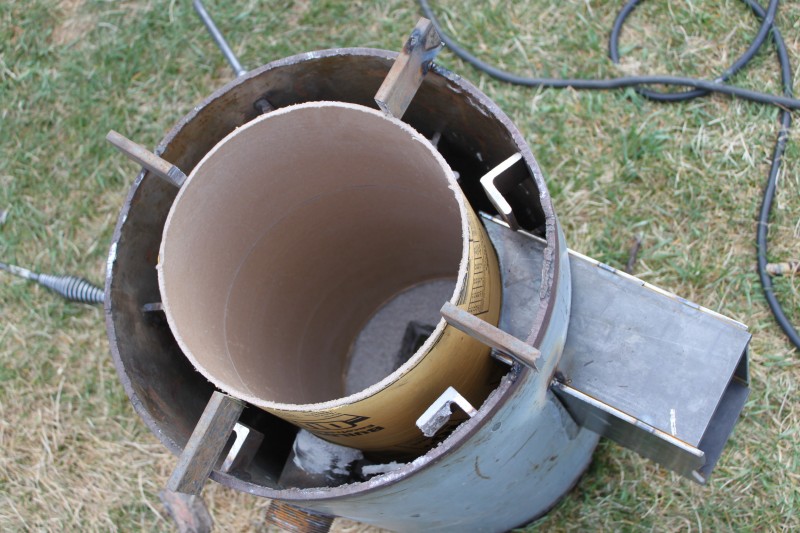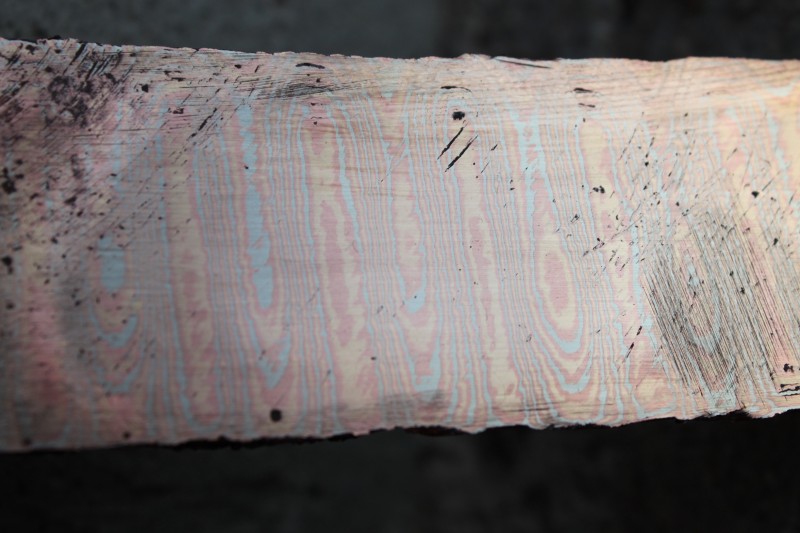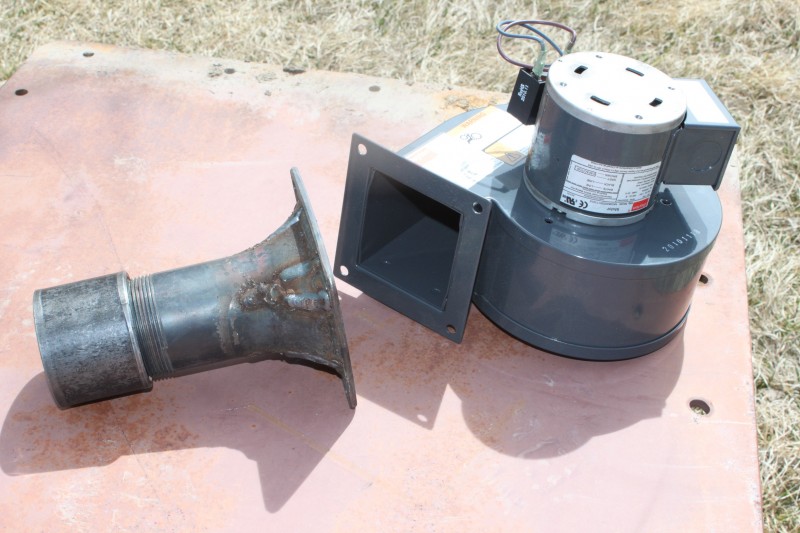
Blower and air adapter
I am building a new forge and will be showing the parts and pieces that will be going into it. I was given information on a new to the knifemakers kind of burner system. It is called a Ribbon Burner and I think it is used in the glass blowing industry. It is supposed to get very hot with less propane usage. I got this burner from Pine Ridge Ribbon Burners. The blower pictured above was recommended by them to run the burner I am using. It also is available on there web site. I built the adapter for it to go from the square opening of the blower to a 2″ pipe.
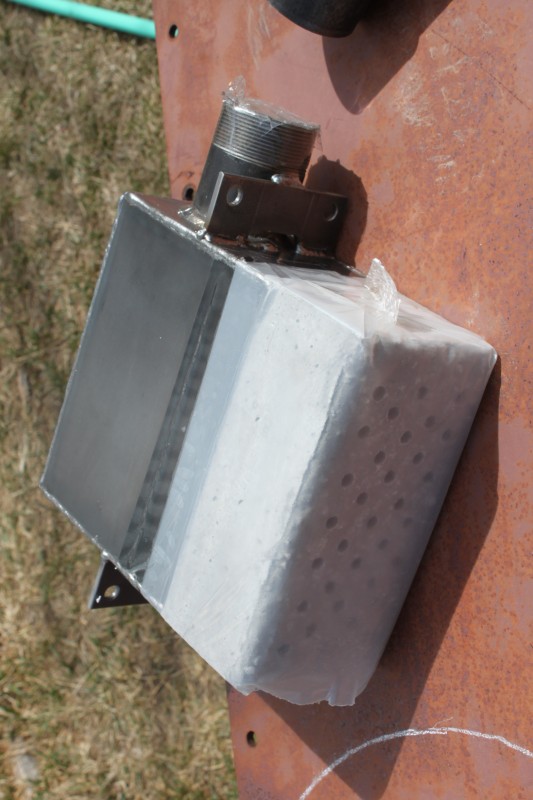
Ribbon burner
This is a closeup of the ribbon burner. The air and gas mix in the back portion before coming out the multiple holes in the refractory. As the forge heats up the refractory heats up also and preheats the air and gas mixer to help it burn better.
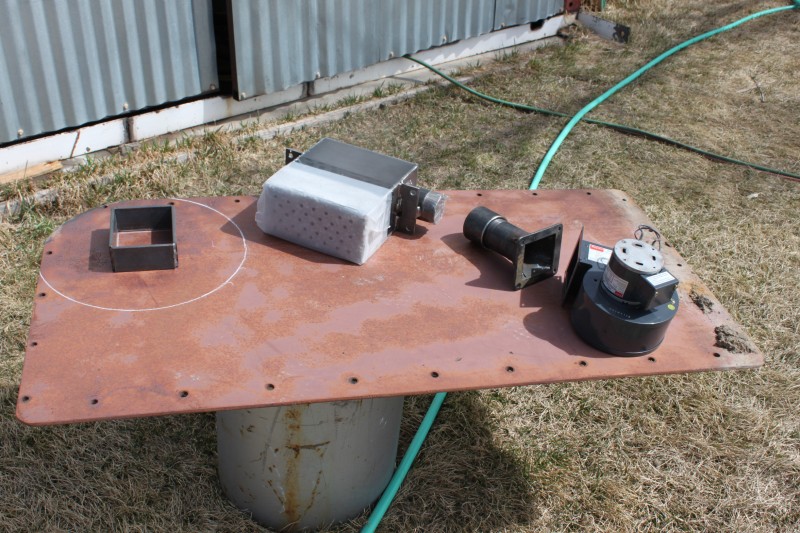
All the parts and pieces
This is a shot of all the components layed out. Blower, adapter, and burner. The 15″ pipe I am using is supporting it and the back plate is layed out on the piece of steel. There will be a window in the back to run long pieces through the forge. A 2″ high square is made to go around the hole then the forge will be layed on its back and refractory poured 2″ thick, just up to the top of the window.
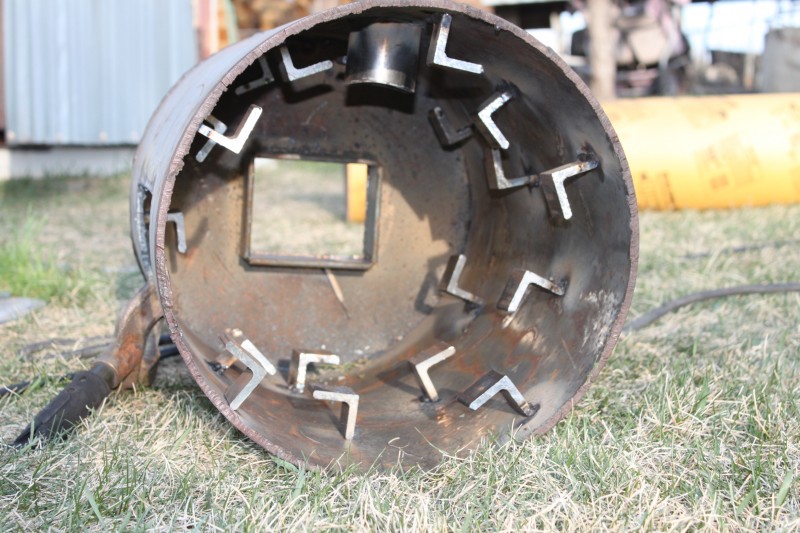
Inside of forge before refractory
This is the inside of the forge before refractory. The little pieces of angel iron are 1 1/2″ and have been tacked in to hold the refractory to the sides. You can also see a pipe extending into the center. That will be the bottom and it will serve as a clean out when the flux builds up in the bottom of the forge. I will be posting more photo’s so check back. If anyone has any questions about the construction feel free to comment
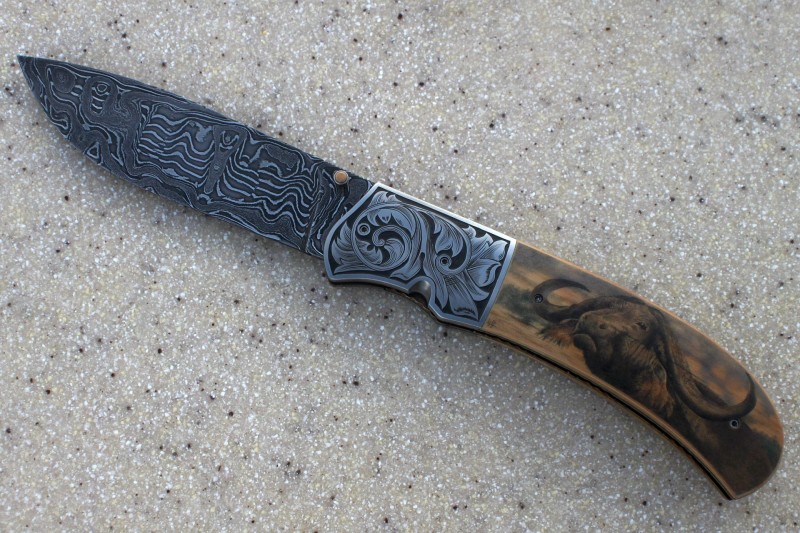
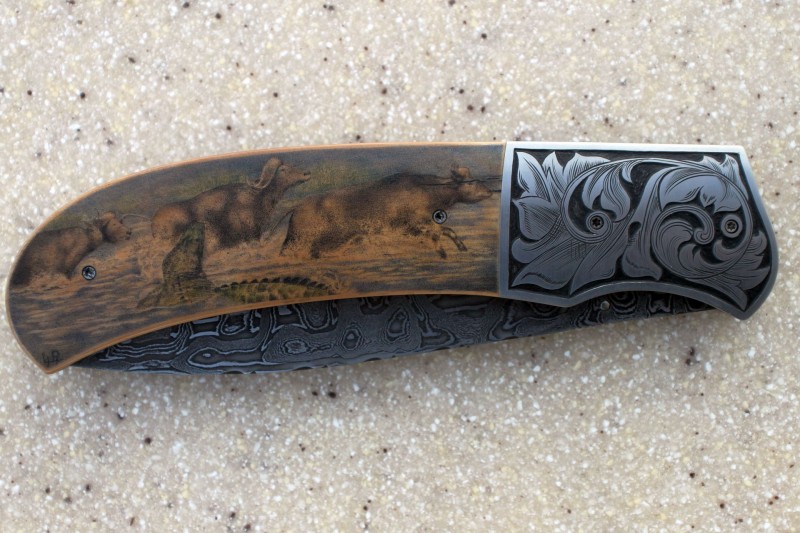

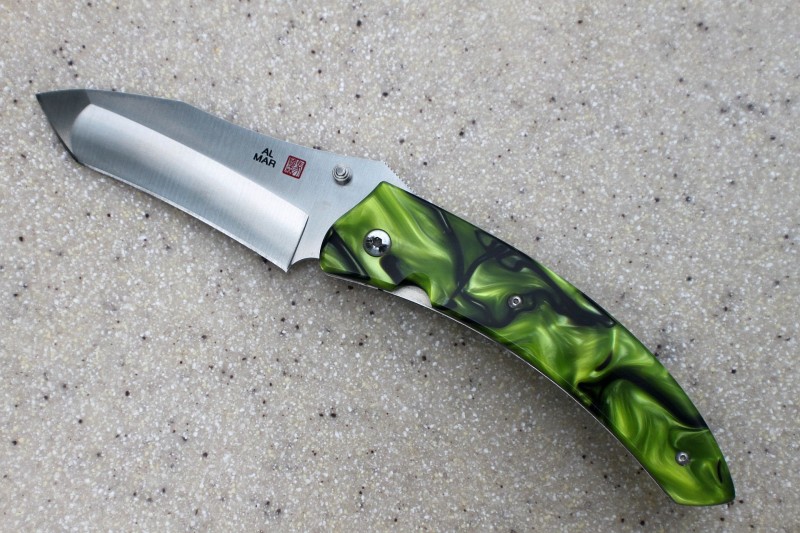
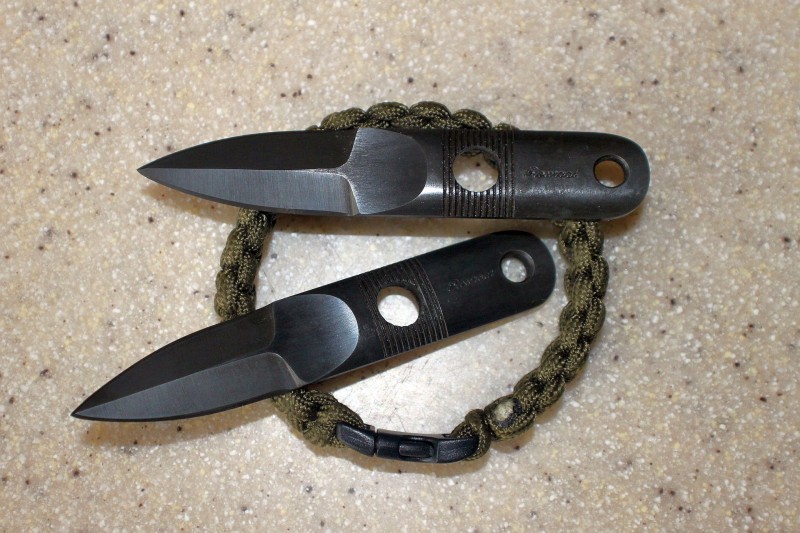
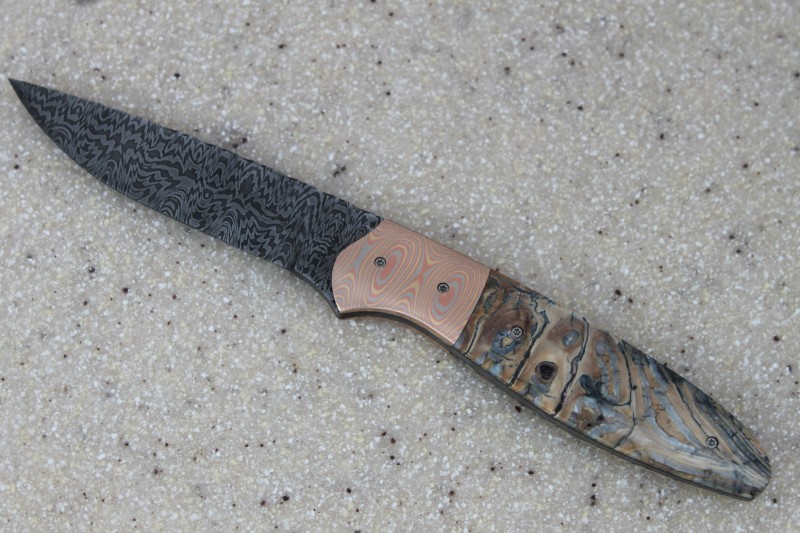 This is a small fixed blade design that I call “Toad”. I just finished it using the Mokume Gane that I made at the ABANA conference in Rapid City. I used 40 layers of Copper, 20 layers of nickle silver, and 20 layers of Red brass. The copper was put between every layer of the brass and nickel silver. I think it turned out very striking. I ran it through a ladder pattern die to bring the layers to the surface. The blade is what I call Teton damascus or a laddered W’s pattern. The handle is Mammoth tooth and it is all put together with 0-80 tork head screws so I could finish the knife then take it apart and etch the hole knife so the damascus shows around the handle. It also has dovetailed bolsters and a tapered tang. Any questions or comments let me know.
This is a small fixed blade design that I call “Toad”. I just finished it using the Mokume Gane that I made at the ABANA conference in Rapid City. I used 40 layers of Copper, 20 layers of nickle silver, and 20 layers of Red brass. The copper was put between every layer of the brass and nickel silver. I think it turned out very striking. I ran it through a ladder pattern die to bring the layers to the surface. The blade is what I call Teton damascus or a laddered W’s pattern. The handle is Mammoth tooth and it is all put together with 0-80 tork head screws so I could finish the knife then take it apart and etch the hole knife so the damascus shows around the handle. It also has dovetailed bolsters and a tapered tang. Any questions or comments let me know.
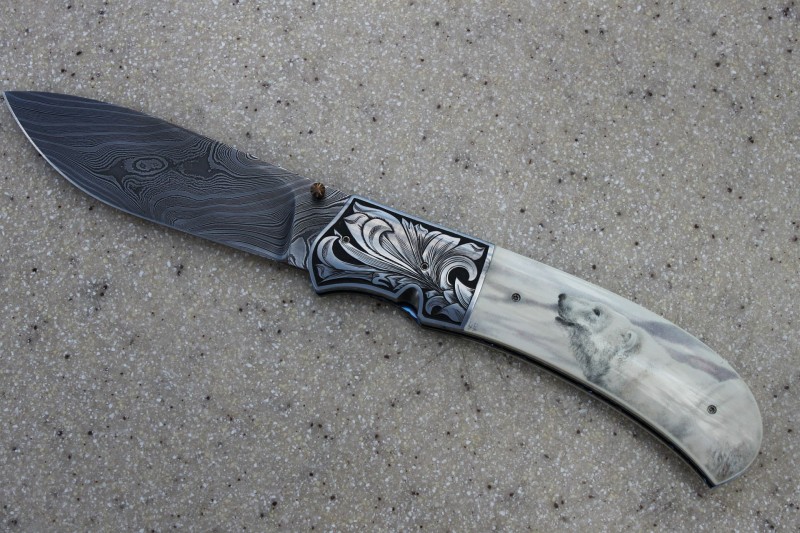
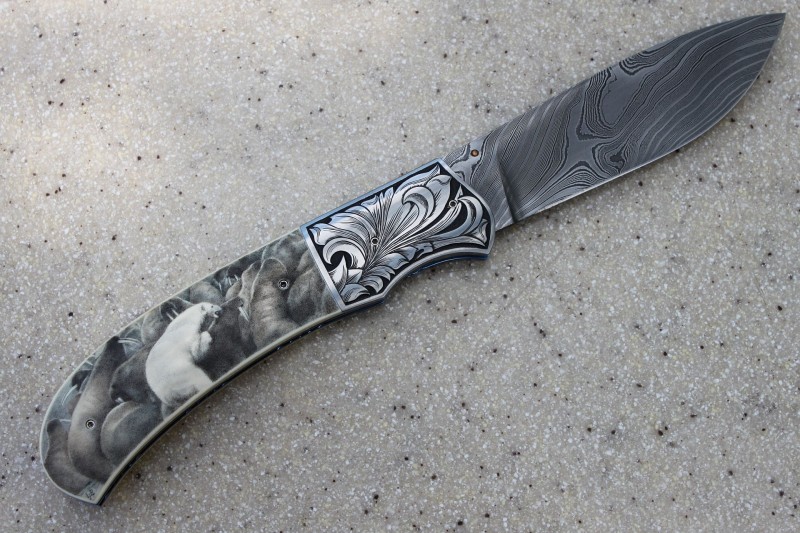
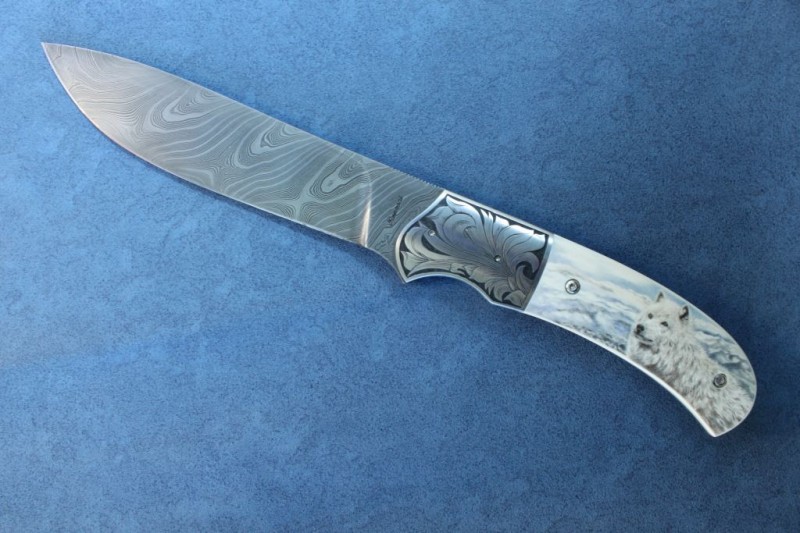
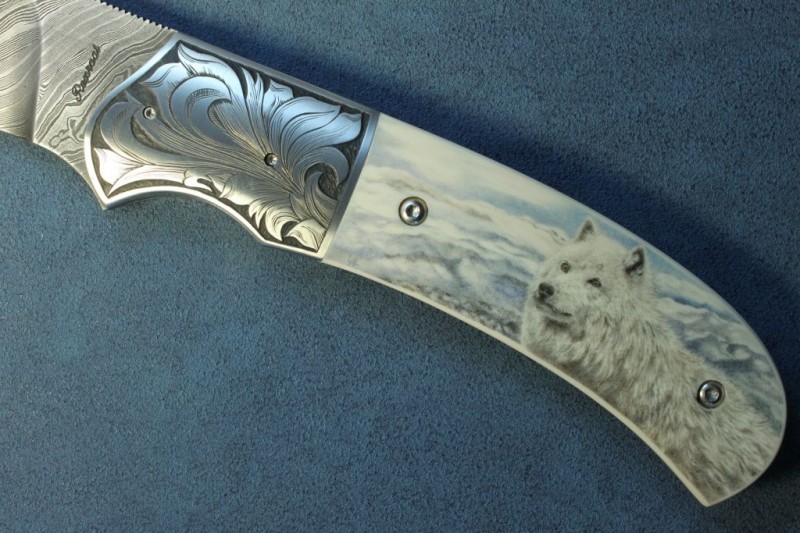 This fixed blade is part of a set that I am working on. There is a folder that has the same handle and blade shape along with the same engraving. I made the damascus and the knife. Then I engraved the bolsters. Lori Ristinen did the scrimshaw work. The other side isn’t done yet but it will have a pack of wolves attaching a large Moose. Check back, I should have the other handle scale soon.
This fixed blade is part of a set that I am working on. There is a folder that has the same handle and blade shape along with the same engraving. I made the damascus and the knife. Then I engraved the bolsters. Lori Ristinen did the scrimshaw work. The other side isn’t done yet but it will have a pack of wolves attaching a large Moose. Check back, I should have the other handle scale soon.